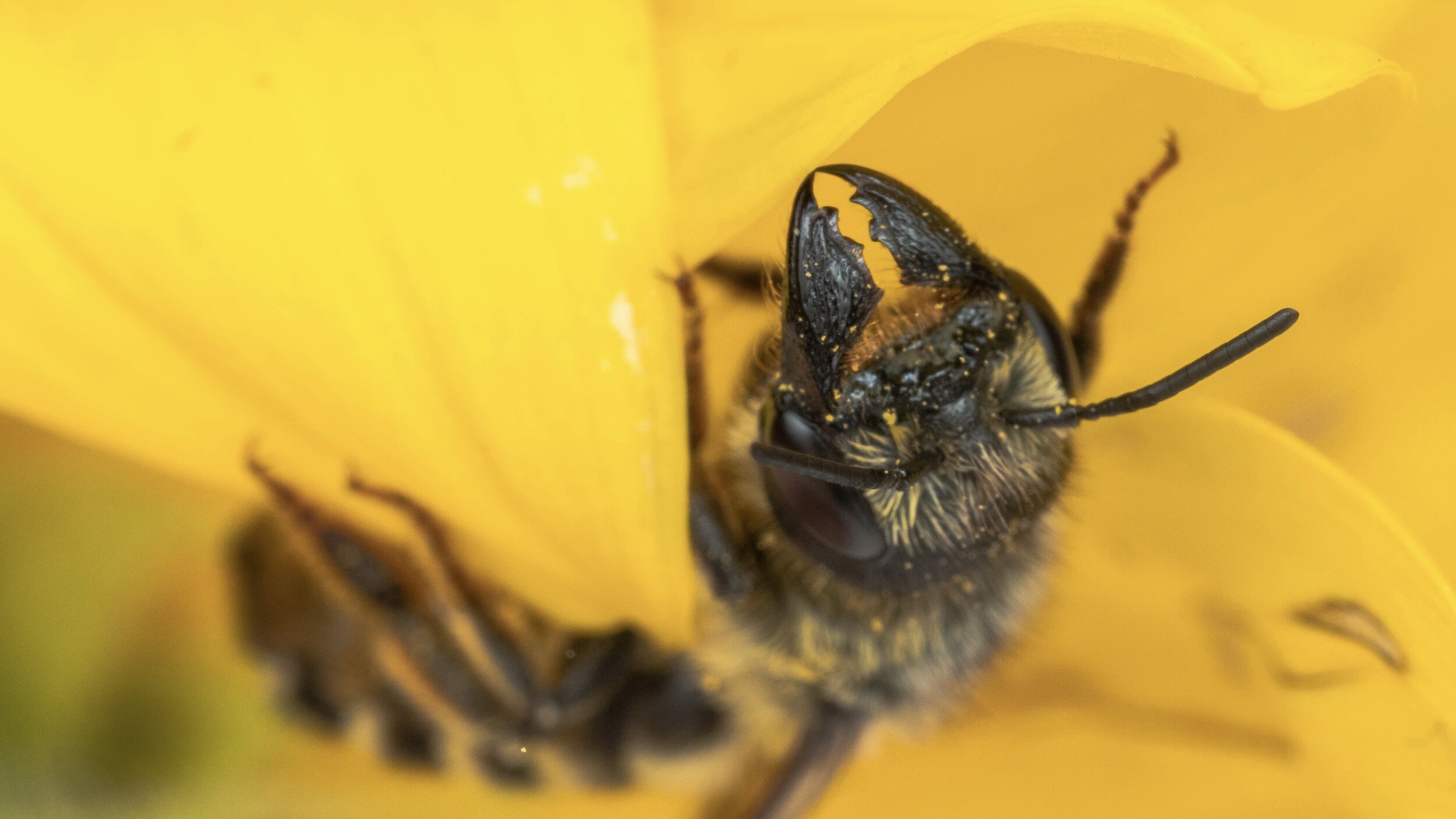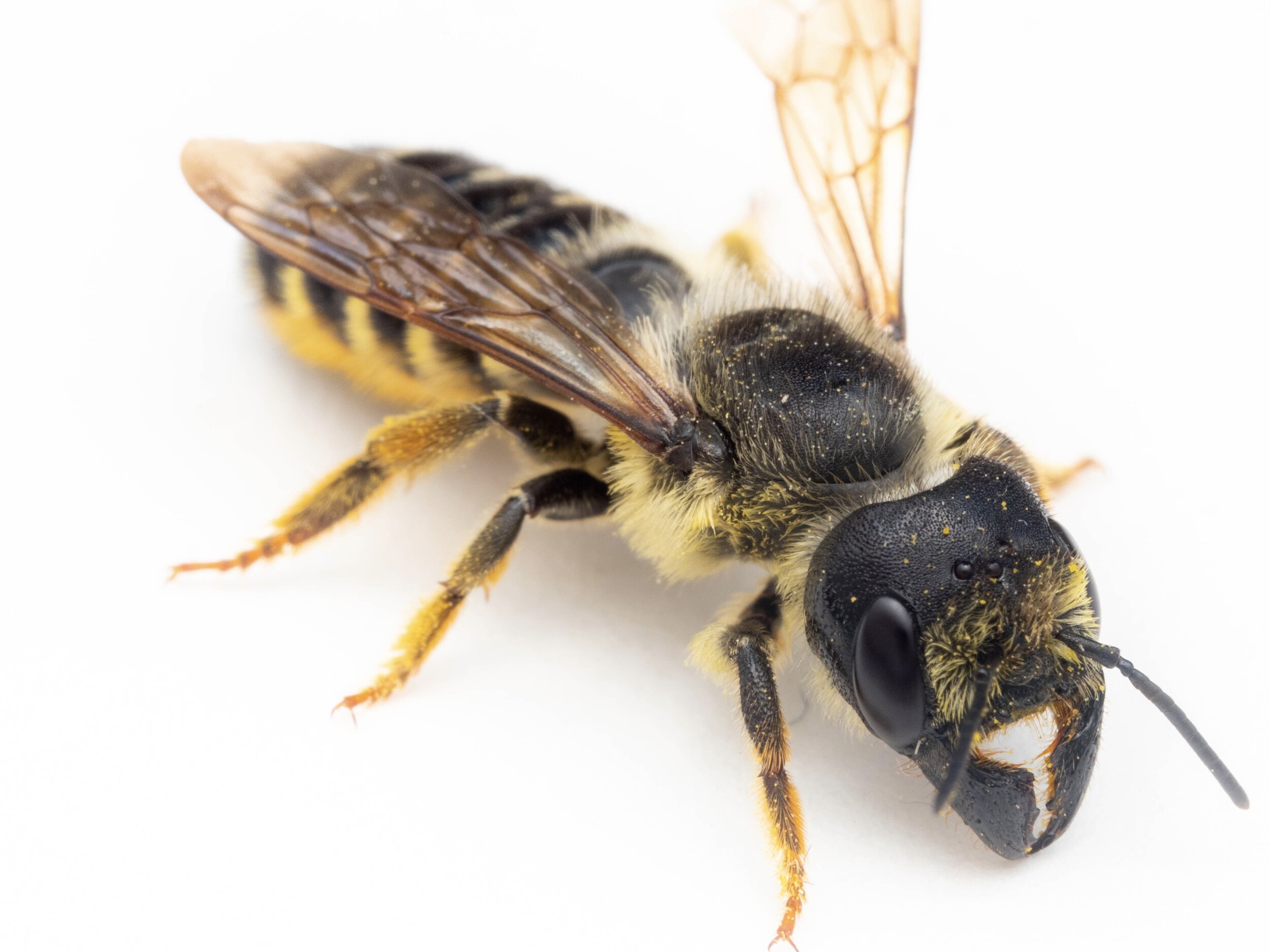Scientific Name: Megachile pugnata
Common Name: Pugnacious Leafcutter Bee
Family: Megachilidae
Species Range: Widely spread throughout North America.
Identification Tips: Pugnacious leafcutter females can be distinguished by their almost comically large mandibles. They are longer in length than her eye! Like all Megachilid species, females also have specialized pollen-carrying hairs called scopae along the underbelly of their abdomens. The scopae tend to be bright yellow in color.
Male pugnacious leaf cutters have stiff bristle-like hairs on their forelegs. They are much smaller-bodied and lack both the large mandibles and the scopae of the females. Males’ mandibles feature three dentates (serrated edges).
Both males and females have dark, black-colored bodies and clear hairs banding between their upper abdominal segments (tergum), resulting in a striking banding pattern on their abdomens.

Nesting Habits: Female leafcutters utilize tunnels bored by other insects in fallen logs or stumps, and they will also nest in artificial tunnels provided for mason bees or other leafcutter species. Due to their larger mandibles and body size, these bees tend to nest in slightly larger tunnels like those made for Osmia lignaria (~8mm in diameter). Females use their large jaws to cut petals and leaf clippings from plants to line their nests, where they will form divisions between each offspring using the collected plant material. Eggs are laid on a small provision of pollen mixed with nectar, and these developing bees will emerge as adults the following summer.
Preferred Forage: M. pugnata can be found on a wide range of flowering plant species. They are known specialists of plants from the Asteraceae family, especially sunflowers. They can be beneficial for food crop pollination, as well for crops such as melon, peas and cranberries.

Active Season: Active from mid-summer to early fall.
Fun Fact: The pugnacious leafcutters get their name from the female bees’ irascible defense of their nest sites!
